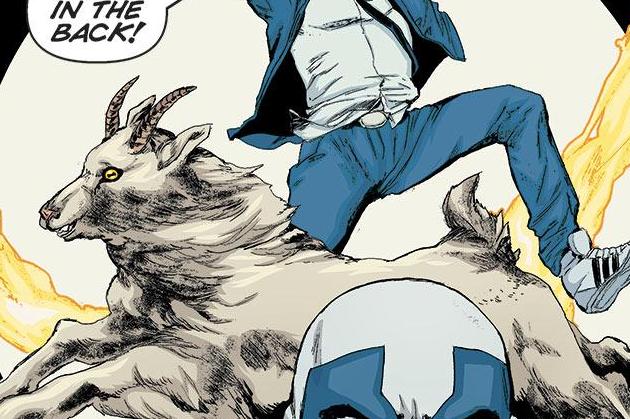Quantum And Woody #7
Writer James Asmus Artist Ming Doyle
Introduction
Quantum And Woody has been consistently entertaining for an impressive amount of time. James Asmus has an impeccable sense of humor that has kept this title interesting for it’s full lifespan. With the excellent Tom Fowler recently departing from the book, some were worried that the art would slowly decline, Ming Doyle has brought some interesting flair to the book that wonderfully builds on what Fowler established within these pages. Last issue left our two heroes in a precarious position that ended up with Eric discovering something that he did not want to know. While this has not been the most entertaining arc of the series thus far, Asmus has done a great job consistently littering the writing with a good sense of humor that keeps the writing feeling new. The riff on gun control wisely takes no sides, and makes fun of everyone involved in the social issue.
Writing
Watching Quantum escape near death situations never fails to be amusing, especially when his dialogue is guaranteed to be funny. Asmus continues to do a great job taking pre-conceived notions about what is going to happen in a certain scene, and then giving the reader the exact opposite of what they expect. The plot in this issue in particular goes back and forth with twists and turns, but is till paced quite well. Some of the jokes have the potential to piss certain people off, but for the most part Quantum And Woody is mostly in good taste. Certain pop culture references remain humorous no matter how dated they are. The dialogue boxes along the top of the page are still very interesting, and have some kind of joke or situation that makes the comic read better in general. Asmus does a good job keeping the stakes high, while still acknowledging that this a sillier story. The cliffhanger to this book is actually quite moving, and a nice high point for the two heroes that cannot seem to catch a break in nearly any circumstance.
Art
Doyle really nails the facial expressions that are so essential to the pacing of this issue. She is an artist that can sell the tough comedic moments that few in the industry can. When random plot twists, like a character bursting out in tears randomly occurs a sense of melodrama is necessary. Doyle does not let any of these characters hold anything back. She conveys the physical comedy with grace and also goes for some of the more broad humor. Lines here are more rounded, and a slight departure compared to what Fowler brought to the book earlier, but still seems appropriate in this setting. Jordie Bellaire continues to offer some bright and interesting colors to the book. Lots of implied information can be gathered from just taking a look at the bright imagery from each page’s colors. Each page looks fairly inspired here, as the books needs many different moods corresponding to the colors.
Conclusion





